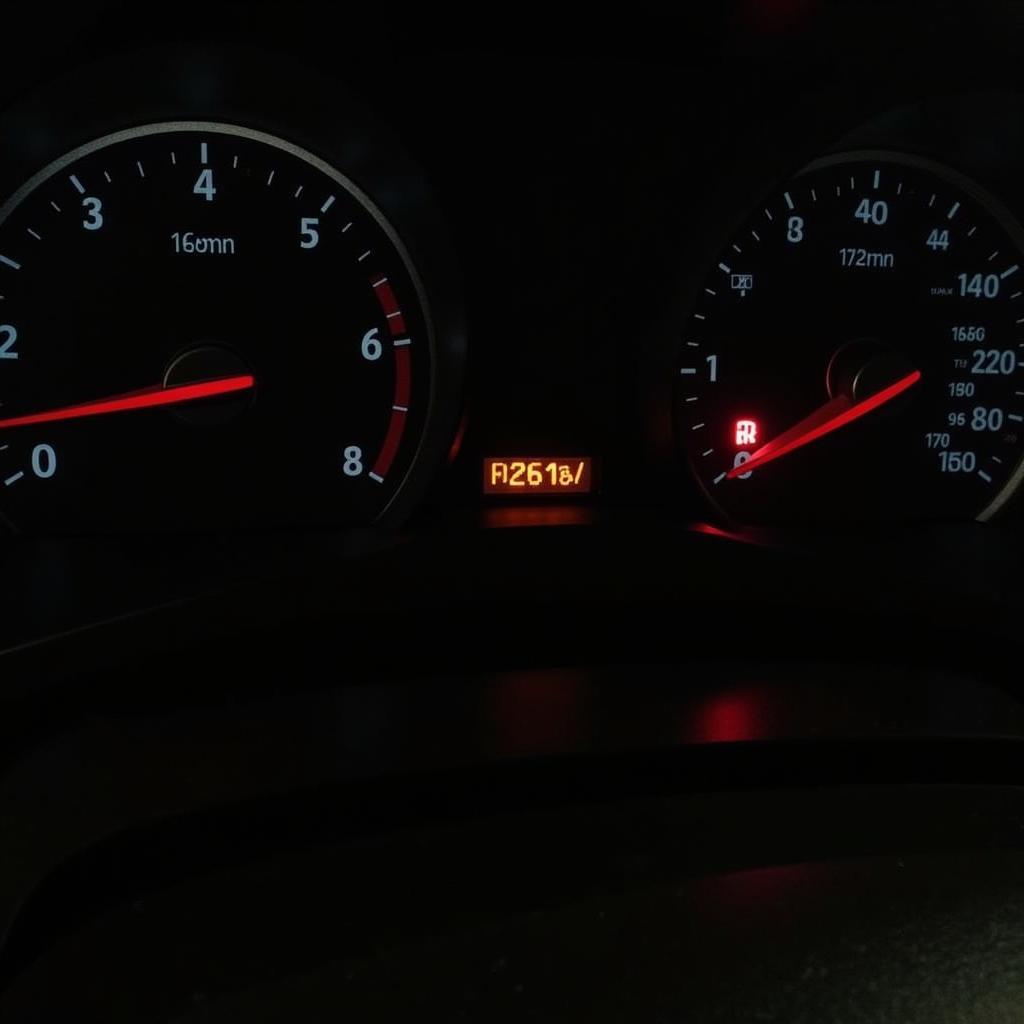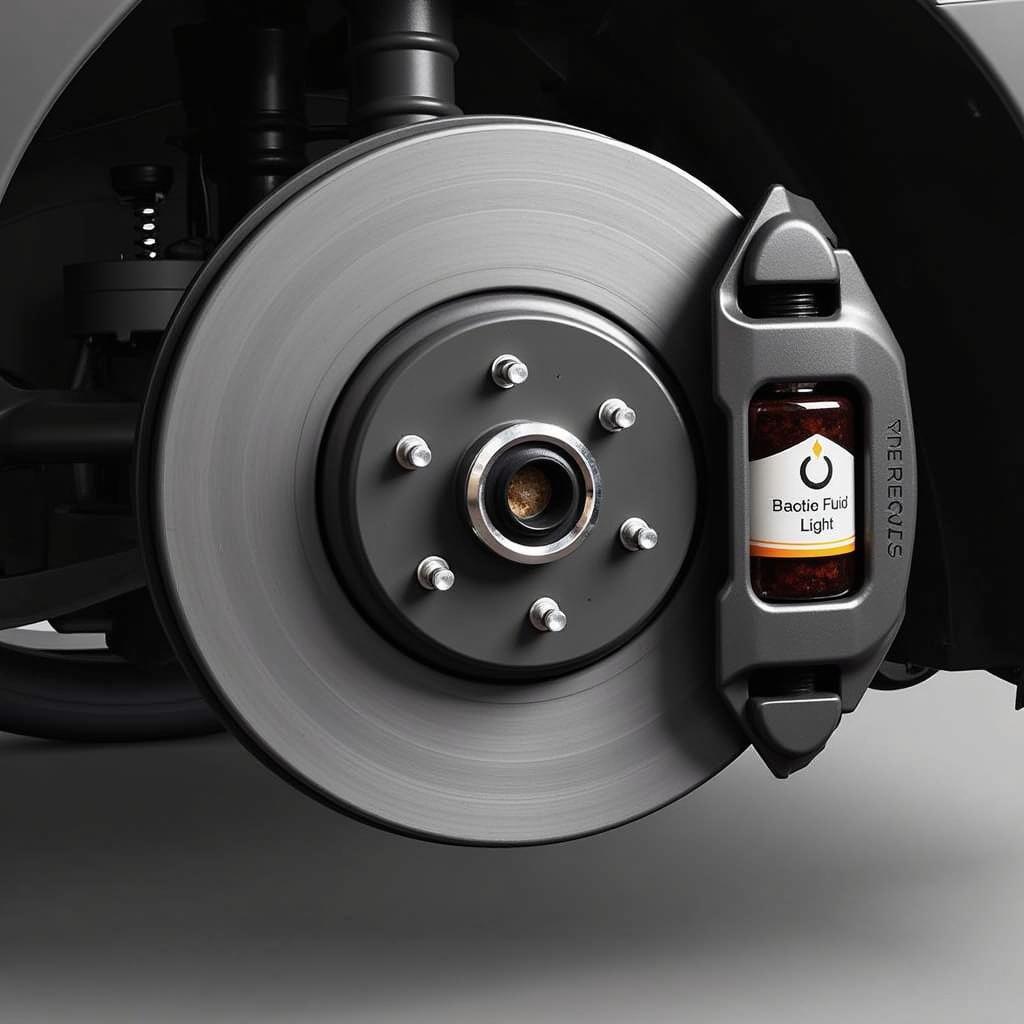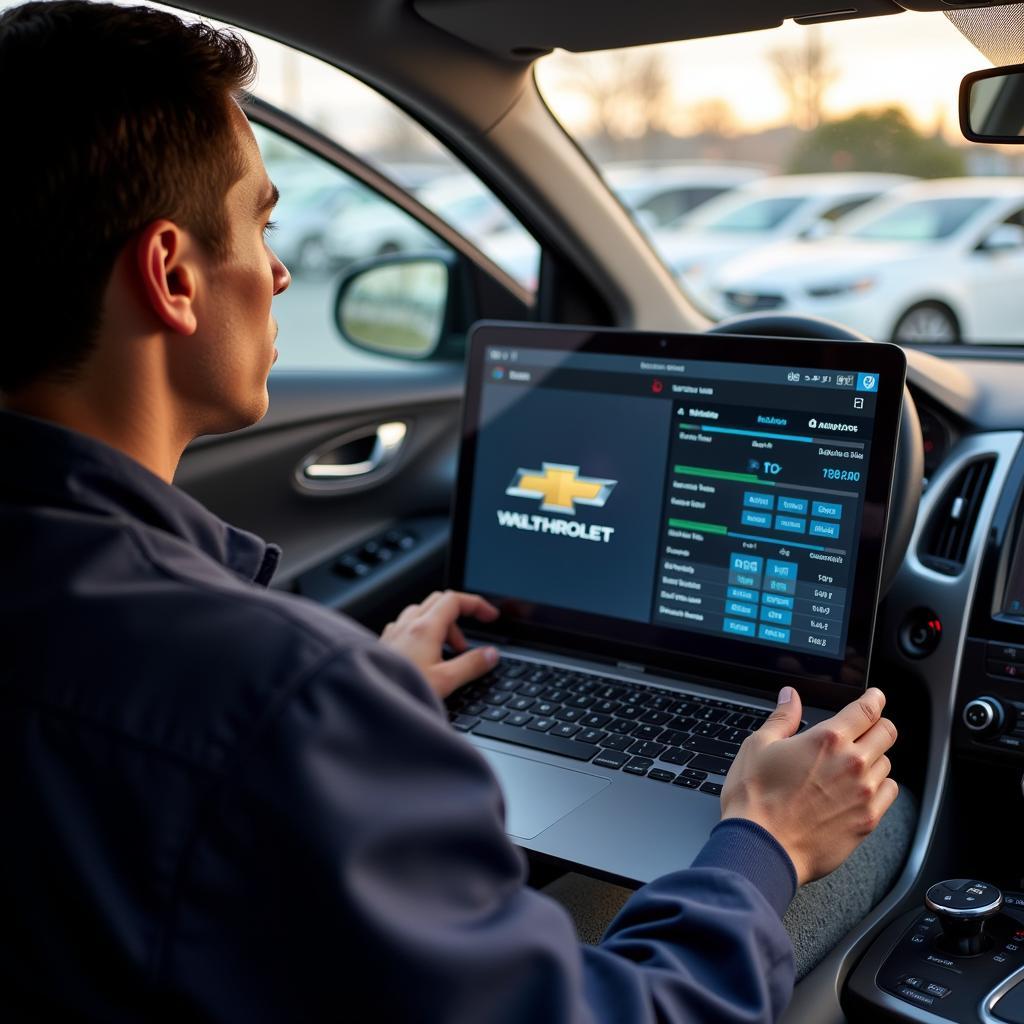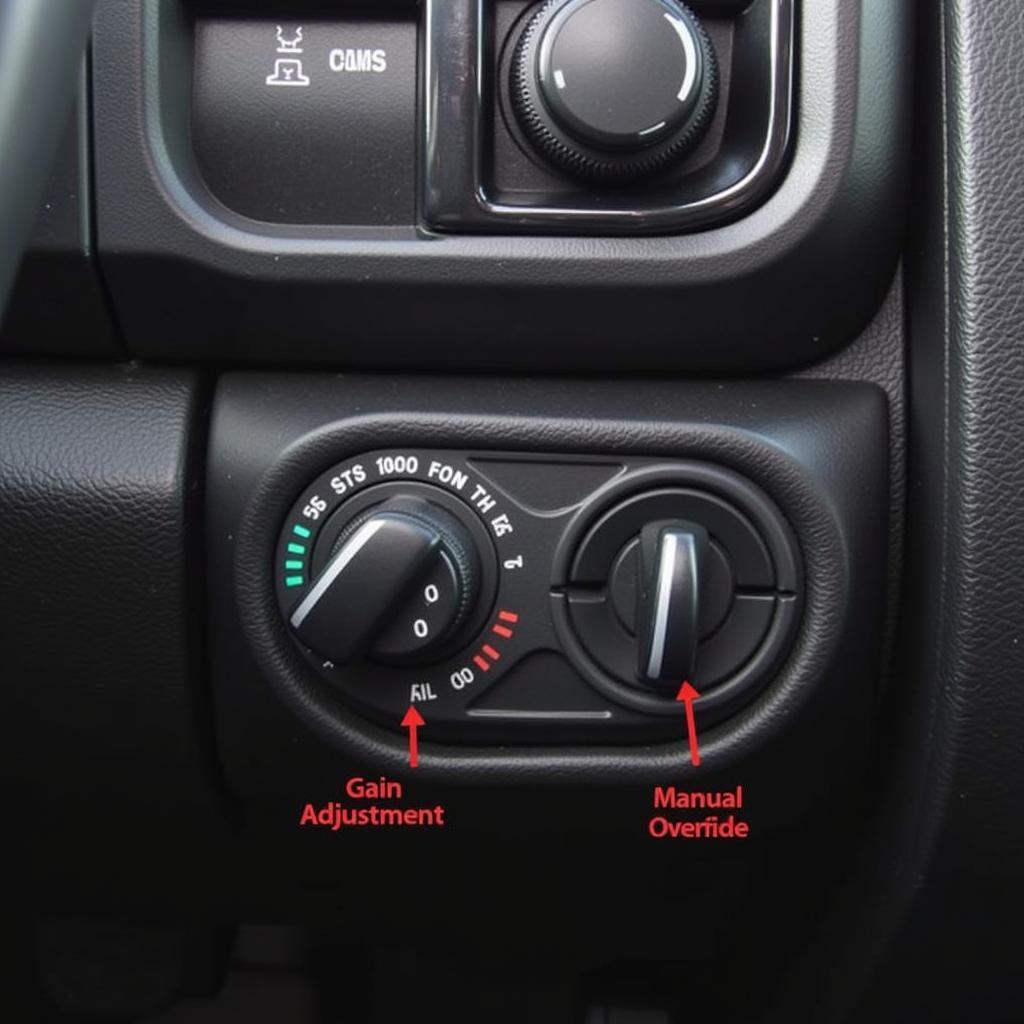The brake warning light on your dashboard is an essential safety feature in your 2014 Chevy Malibu. When illuminated, it signals a potential issue with your braking system that requires immediate attention. Ignoring this warning light could lead to dangerous situations and costly repairs. This comprehensive guide will delve into the common causes of a 2014 Chevy Malibu brake warning light and offer practical solutions to help you diagnose and address the problem.
 2014 Chevy Malibu dashboard with illuminated brake warning light
2014 Chevy Malibu dashboard with illuminated brake warning light
Understanding Your Chevy Malibu’s Brake System
Before we dive into the causes, it’s helpful to understand the basics of your Malibu’s braking system. It consists of several interconnected components, including:
- Brake Pedal: The pedal you press to slow down or stop the car.
- Brake Booster: An amplifier that multiplies the force you apply to the brake pedal, making braking easier.
- Master Cylinder: A hydraulic pump that converts the mechanical force from the brake pedal into hydraulic pressure.
- Brake Lines: Metal tubes carrying the hydraulic pressure from the master cylinder to the brakes at each wheel.
- Brake Calipers and Wheel Cylinders: Components housing pistons that press the brake pads against the rotors (disc brakes) or drums (drum brakes) to create friction and slow down the vehicle.
Common Causes of a 2014 Chevy Malibu Brake Warning Light
Several factors can trigger the brake warning light in your 2014 Malibu. Here are the most common culprits:
1. Low Brake Fluid Level
One of the most common and easiest-to-fix reasons for the brake warning light is low brake fluid. Brake fluid is the lifeblood of your braking system, transmitting hydraulic pressure from the master cylinder to the brakes.
How to check:
- Locate the brake fluid reservoir under the hood. It’s typically a translucent plastic container with a clearly marked minimum and maximum level indicator.
- Visually inspect the fluid level. If it’s below the minimum mark, you need to add more brake fluid.
Solution: If the fluid level is low, carefully add the recommended brake fluid until it reaches the maximum line. However, simply adding brake fluid without addressing the underlying cause of the leak won’t solve the problem. It’s crucial to inspect for leaks and get them fixed by a qualified mechanic.
2. Worn Brake Pads
Brake pads are consumables designed to wear down over time. As you apply the brakes, the pads clamp against the rotors or drums, generating friction to slow or stop your car. Thin brake pads can trigger the brake warning light.
How to check:
While visually inspecting the brake pads requires removing a wheel, you can often get an idea of their condition by listening for these signs:
- Squealing or screeching noises when braking: A clear indication of worn brake pads.
- Grinding noise when braking: A sign that the brake pads are completely worn down, and metal is rubbing against metal. This requires immediate attention.
Solution: If your brake pads are worn, it’s crucial to have them replaced as soon as possible. Driving with worn brake pads compromises your safety and can damage the rotors, leading to more expensive repairs.
3. Faulty Brake Light Switch
The brake light switch, located above the brake pedal, activates your brake lights when you press the pedal. A malfunctioning brake light switch can sometimes illuminate the brake warning light.
How to check:
- Test your brake lights. Have someone press the brake pedal while you stand behind the car to see if all brake lights illuminate. If they don’t work, it could be a faulty brake light switch.
- Check for unusual brake pedal feel. A faulty brake light switch can sometimes cause the brake pedal to feel stiff or require excessive force.
Solution: Replacing a brake light switch is a relatively simple and inexpensive repair.
 Brake fluid reservoir and worn brake pads on a 2014 Chevy Malibu
Brake fluid reservoir and worn brake pads on a 2014 Chevy Malibu
4. ABS (Anti-Lock Braking System) Issue
Modern cars like your 2014 Malibu are equipped with an ABS, designed to prevent wheel lockup during hard braking. If the ABS system detects a malfunction, it can trigger the brake warning light.
How to check:
- ABS warning light: In many cases, the ABS warning light will illuminate along with the brake warning light, indicating a potential issue with the ABS system.
- Unusual braking behavior: You might experience unusual sensations during braking, such as pulsating or vibrating, signaling an ABS problem.
Solution: Diagnosing and repairing an ABS issue requires specialized knowledge and tools. It’s best to take your Malibu to a qualified mechanic or dealership for diagnosis and repair.
5. Other Less Common Causes
While the above are the most common culprits, some less frequent issues can also trigger the brake warning light:
- Faulty brake caliper or wheel cylinder: These components can leak brake fluid or seize, impacting braking performance.
- Air in the brake lines: Air bubbles in the brake lines can compress, leading to a spongy brake pedal and reduced braking efficiency.
- Master cylinder failure: A failing master cylinder might not generate sufficient hydraulic pressure.
- Electrical issues: Wiring problems or a faulty sensor can disrupt the brake system’s functionality.
What to Do When Your Brake Warning Light Comes On
If your 2014 Chevy Malibu’s brake warning light illuminates, take these steps:
- Stay Calm and Assess the Situation: Don’t panic. Pull over to a safe location as soon as possible.
- Check for Obvious Signs: Inspect the brake fluid level. If it’s dangerously low, do not attempt to drive.
- Proceed with Caution: If the brake fluid level seems okay and you feel safe driving, proceed cautiously to a nearby mechanic or auto parts store.
- Get Professional Help: It’s crucial to have the issue diagnosed and repaired by a qualified mechanic, even if you think it’s a minor problem.
Remote Diagnostics and Software Solutions
In some cases, your 2014 Chevy Malibu’s brake warning light might be triggered by a software glitch or a sensor malfunction. Remote diagnostics and software solutions can be a valuable tool in such situations.
How it Works:
- Connect your car to a specialized diagnostic tool that interfaces with the vehicle’s onboard computer.
- This tool reads the error codes stored in the computer, providing insights into the potential cause of the brake warning light.
- In some instances, technicians can remotely access your car’s software, update it, or reset the error codes if it’s a software-related issue.
Benefits of Remote Diagnostics and Software Solutions:
- Convenience: You can often have your car diagnosed and potentially fixed without leaving your home or office.
- Faster Diagnosis: Remote diagnostics can quickly pinpoint the problem, saving time and unnecessary repairs.
- Cost-Effective: In some cases, software updates or resets can be cheaper than traditional repairs.
Finding Remote Diagnostic Services:
Several companies offer remote diagnostics and software solutions for vehicles. You can search online or inquire with your dealership or trusted mechanic.
 Technician performing remote diagnostics on a 2014 Chevy Malibu using a laptop
Technician performing remote diagnostics on a 2014 Chevy Malibu using a laptop
Conclusion
The brake warning light in your 2014 Chevy Malibu is a critical safety feature. Ignoring it could lead to dangerous driving conditions and costly repairs. By understanding the common causes, performing simple checks, and seeking professional help when needed, you can ensure your Malibu’s braking system remains in top condition, keeping you and your passengers safe on the road. Don’t hesitate to explore the convenience and efficiency of remote diagnostics and software solutions for swift and potentially cost-effective solutions.

